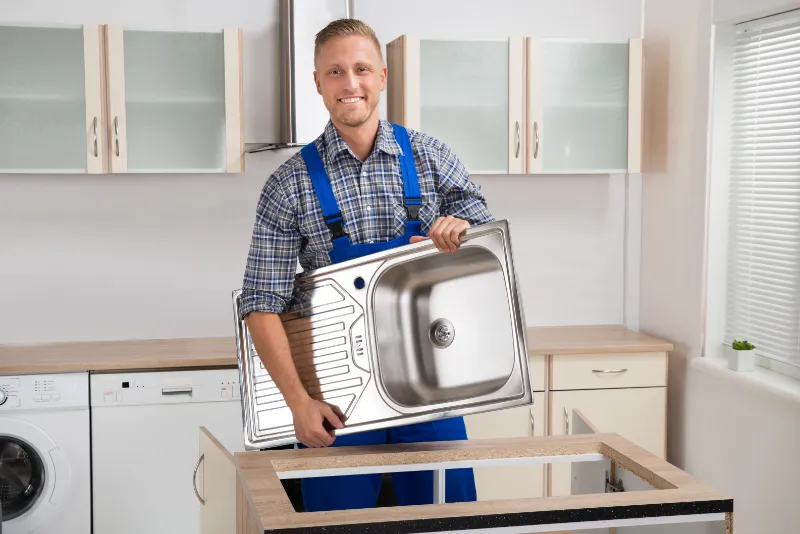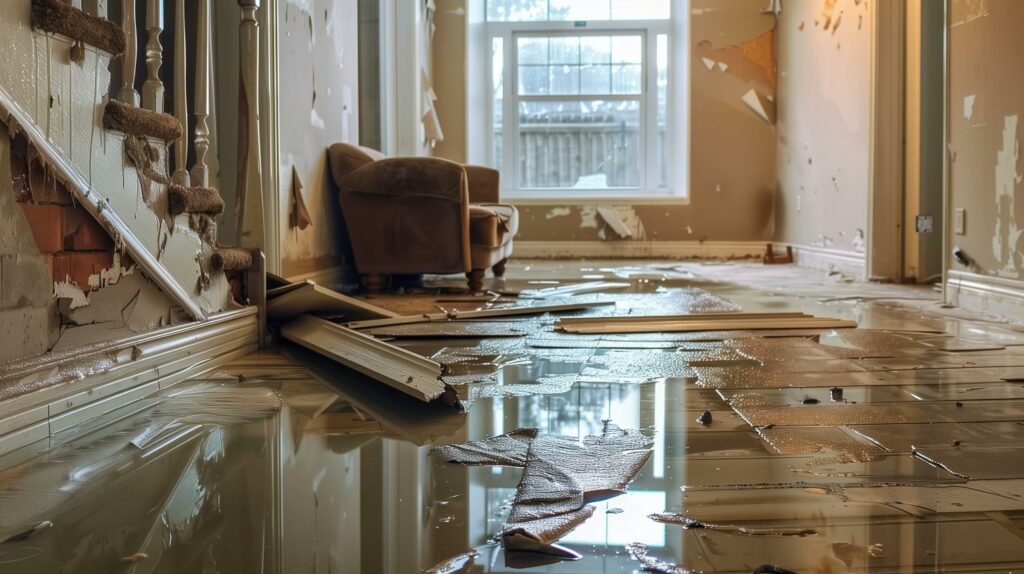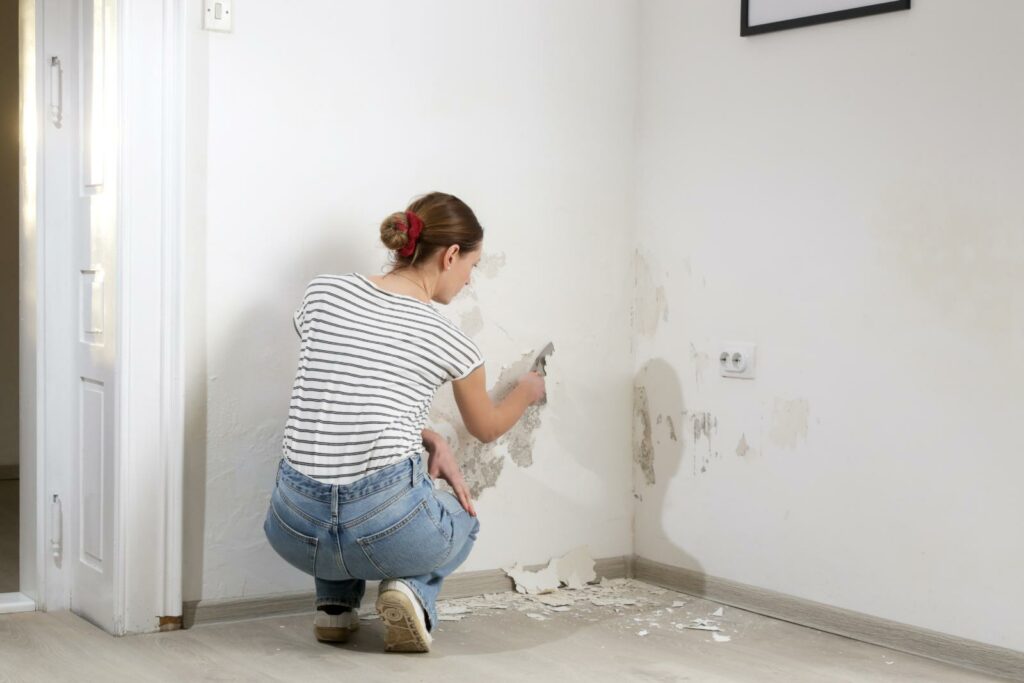Contents
Do you want to take control of your plumbing problems? DIY is the answer!
In this article, we will explore what DIY means in plumbing and how it can benefit you. From fixing leaky faucets to unclogging drains, you’ll discover common DIY plumbing projects that you can tackle yourself.
However, we’ll also discuss the risks involved and provide best practices to ensure your plumbing adventures are successful.
Get ready to become a plumbing superhero!
Key Takeaways
- DIY plumbing allows individuals to save time and money.
- DIY plumbing empowers individuals to be self-reliant in maintaining their plumbing system.
- DIY plumbing involves a variety of tasks, from simple repairs to complex installations.
- Calling a professional plumber is necessary for persistent or recurring plumbing problems, major leaks causing water damage, sewage backups or foul odors, and renovations or new installations requiring professional expertise.
The Definition of DIY Plumbing
To understand the definition of DIY plumbing, it’s important for you to know that DIY stands for ‘do-it-yourself’ and refers to the practice of completing plumbing tasks or repairs without hiring a professional plumber. DIY plumbing allows individuals like you to take charge of their own plumbing needs, saving time and money in the process.
By engaging in DIY plumbing, you have the opportunity to serve yourself and others. You become the handy person who can fix leaky faucets, unclog drains, or even install new fixtures. This sense of accomplishment not only brings satisfaction but also empowers you to be self-reliant in maintaining your plumbing system.
DIY plumbing involves a variety of tasks, ranging from simple repairs to more complex installations. With readily available resources such as online tutorials, step-by-step guides, and instructional videos, you can learn the necessary skills to tackle a wide range of plumbing projects. However, it’s important to note that DIY plumbing does have limitations. For major plumbing issues or projects requiring specialized knowledge, it’s advisable to seek professional assistance to ensure the safety and integrity of your plumbing system.
Benefits of DIY Plumbing
When engaging in DIY plumbing, you can experience numerous benefits that come with taking charge of your own plumbing needs. Here are three reasons why DIY plumbing can be beneficial for you:
- Cost savings: By doing the plumbing work yourself, you can save a significant amount of money. Hiring a professional plumber can be expensive, and by tackling the job on your own, you eliminate the need for labor costs. Additionally, you have the freedom to choose affordable materials and fixtures, further reducing your expenses.
- Convenience and flexibility: DIY plumbing allows you to work at your own pace and on your own schedule. You don’t have to wait for a plumber to become available or pay extra for emergency services. You have the flexibility to address plumbing issues as soon as they arise, minimizing any potential damage or inconvenience.
- Personal satisfaction and empowerment: Successfully completing a plumbing project on your own can be incredibly rewarding. It gives you a sense of accomplishment and empowerment, knowing that you have the skills and knowledge to tackle household plumbing issues. It also builds your confidence in other DIY projects, encouraging you to take on more challenges in the future.
While DIY plumbing can be beneficial, it’s essential to recognize your limitations. Some plumbing tasks may require professional expertise and tools. It’s important to know when to call in a professional plumber to ensure the safety and integrity of your plumbing system. However, for smaller repairs and installations, DIY plumbing can be a cost-effective and fulfilling option.
Risks of DIY Plumbing
One major risk of DIY plumbing is the potential for costly mistakes. When attempting to fix plumbing issues on your own, you may unintentionally make errors that can lead to expensive repairs down the line. For example, if you incorrectly install a pipe or fitting, it could result in leaks, water damage, or even burst pipes. These issues can cause extensive damage to your home, requiring professional assistance to fix and resulting in a significant financial burden.
Another risk of DIY plumbing is the potential for personal injury. Plumbing tasks often involve working with tools, equipment, and potentially hazardous substances such as chemicals or sewage. Without the proper knowledge and experience, you may put yourself at risk of accidents, such as cuts, burns, or exposure to harmful substances. Additionally, plumbing systems can be complex, and attempting to work on them without the necessary expertise can increase the likelihood of accidents occurring.
Furthermore, DIY plumbing can also lead to code violations. Plumbing systems must comply with local building codes and regulations to ensure safety and functionality. Without the proper understanding of these codes, you may unknowingly install or modify plumbing components in violation of regulations. This can result in fines and penalties, as well as potential difficulties when selling your home in the future.
In conclusion, while DIY plumbing may seem like a cost-effective option, it comes with several risks. Costly mistakes, personal injury, and code violations are just a few of the potential hazards. It’s important to assess your own capabilities and consider the potential consequences before attempting to tackle plumbing projects on your own.
When in doubt, it’s always advisable to consult a professional plumber who can ensure the job is done safely and effectively.
Common DIY Plumbing Projects
If you’re considering taking on plumbing projects yourself, there are several common DIY plumbing projects that you can tackle with the right knowledge and tools. These projects can help you save money and gain a sense of accomplishment. Here are three common DIY plumbing projects that you can confidently take on:
- Fixing a leaky faucet: Leaky faucets aren’t only annoying but can also waste a significant amount of water over time. With a few basic tools like a wrench and replacement parts, you can easily fix a leaky faucet. By doing this project yourself, you’ll not only save on plumber costs but also contribute towards water conservation.
- Unclogging a drain: A clogged drain can disrupt your daily routine and cause inconvenience. However, you can unclog most drains yourself using a plunger or a drain snake. By learning these simple techniques, you can quickly get your drains flowing smoothly again without the need for professional assistance.
- Installing a new showerhead: Upgrading your showerhead can enhance your bathing experience and conserve water. With the right instructions and tools, installing a new showerhead is a straightforward DIY project. You can choose from various designs and features to find the perfect showerhead that suits your needs and preferences.
Best Practices for DIY Plumbing
To ensure successful DIY plumbing projects, it’s essential to consistently follow best practices. By adhering to these guidelines, you can ensure that your plumbing work is safe and effective, saving you time, money, and potential headaches down the line.
First and foremost, always prioritize safety. Before starting any plumbing project, make sure to turn off the water supply to the area you’ll be working on. This will prevent any accidental leaks or flooding. Additionally, wear protective gear such as gloves and safety glasses to protect yourself from harmful chemicals or sharp objects.
Next, it’s crucial to have the right tools for the job. Investing in a basic plumbing toolkit will make your DIY projects much easier. This toolkit should include items such as a pipe wrench, plunger, adjustable wrench, and pipe cutter. Having these tools on hand will allow you to tackle a wide range of plumbing issues without having to make multiple trips to the hardware store.
When it comes to actually performing the plumbing work, take your time and be thorough. Rushing through a project can lead to mistakes and subpar results. Take the time to properly measure and plan out your project before starting. Additionally, make sure to follow all manufacturer instructions and guidelines when installing or repairing plumbing fixtures.
Lastly, if you encounter a plumbing issue that’s beyond your skill level or if you feel uncomfortable handling, don’t hesitate to call a professional plumber. It’s better to seek help early on than to risk causing more damage or creating a safety hazard.
Conclusion
In conclusion, DIY plumbing can be a cost-effective and rewarding option for simple projects like fixing a leaky faucet or unclogging a drain.
However, it’s important to be aware of the risks involved and know when to call a professional for more complex issues.
Following best practices and taking necessary precautions can help ensure successful DIY plumbing projects.
Remember, if in doubt, it’s always better to seek professional assistance to avoid potential damage and costly repairs.
You may also like: Common plumbing issues from bathroom projects?




